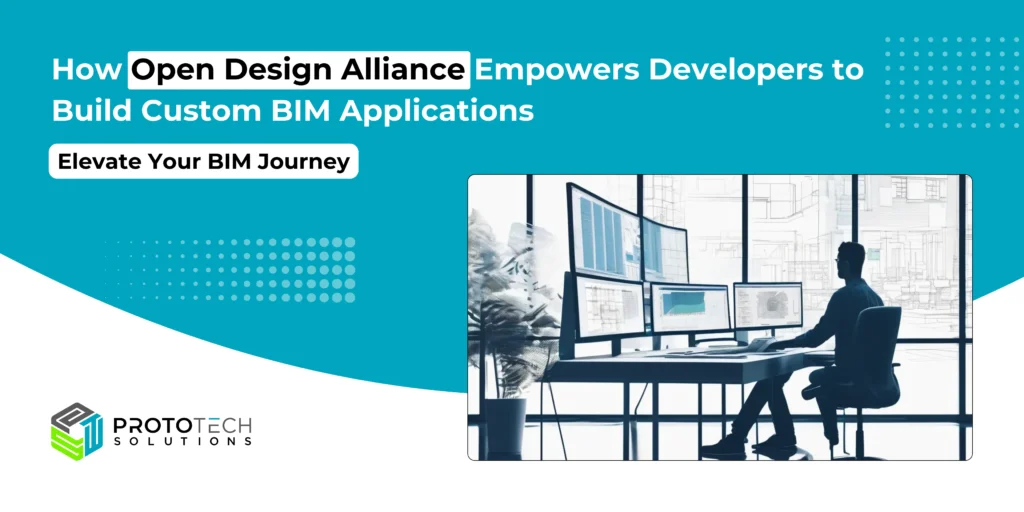How Open Design Alliance Empowers Developers to Build Custom BIM Applications

What is the Open Design Alliance (ODA)?
Established in 1998, the Open Design Alliance (ODA) is a prominent nonprofit organization dedicated to advancing software development for a range of engineering applications, with a special emphasis on Computer-Aided Design (CAD) and Building Information Modeling (BIM) technologies. By offering an extensive suite of software development kits (SDKs), ODA provides developers with the essential tools needed to ensure compatibility with widely used file formats such as DWG, DGN, RVT, IFC, and several others. This initiative significantly contributes to democratizing access to sophisticated design functionalities, allowing users to leverage advanced design capabilities without being burdened by expensive proprietary software licenses.
The Open Design Alliance is transforming the development landscape for custom Building Information Modeling (BIM) applications by delivering a comprehensive platform that’s rich with powerful tools and invaluable resources. In this blog post, we will explore how ODA empowers developers in their creative endeavors, enhances interoperability among diverse systems, and nurtures innovation within the dynamic BIM ecosystem. This not only fosters collaboration across various sectors but also paves the way for a more integrated future in design and engineering.
Key Offerings of ODA
- SDKs for Multiple Formats: ODA provides a comprehensive suite of SDKs that support various file formats essential for BIM applications. This includes tools for DWG, DGN, IFC, and Revit files, allowing developers to create applications that can handle a wide range of engineering data.
- Interoperability Tools: One of the standout features of ODA’s offerings is its focus on interoperability. The ODA Platform enables seamless integration between different software solutions, ensuring that data can flow freely across various platforms and applications. This is particularly important in the BIM space, where collaboration among different stakeholders is critical.
- Scan-to-BIM Technology: ODA is at the forefront of innovation with its Scan-to-BIM SDK, which converts 3D laser scan data into parametric 3D BIM models. This technology allows developers to transform point cloud data into usable BIM formats, facilitating accurate modeling and analysis of existing structures
- BIM Suite: The ODA BIM Suite offers a comprehensive set of tools for visualization and data exchange, making it easier for developers to work with both open standards and proprietary BIM formats. This suite enhances the ability to create custom applications tailored to specific project needs
The Role of ODA in BIM Development

1. Interoperability Through Open Standards
The AEC industry often grapples with issues of file compatibility and data exchange. Proprietary file formats can hinder collaboration and limit software flexibility. ODA addresses this by offering open standards and libraries that ensure seamless interoperability between different software platforms.
Key highlights include:
- IFC Support: ODA provides comprehensive support for Industry Foundation Classes (IFC), enabling developers to create applications that facilitate data exchange across BIM platforms.
- BIM Interop SDK: This SDK simplifies the integration of BIM data from various sources, allowing developers to focus on enhancing user experience.
By breaking down data silos, ODA’s tools enable teams to work collaboratively, regardless of their chosen software.
2. Comprehensive Development Frameworks
The ODA’s development frameworks empower developers to design custom solutions tailored to specific project requirements. With support for popular programming languages like C++, .NET, and Java, the ODA ensures that developers can leverage familiar tools to build robust applications.
Some standout frameworks include:
- BIM SDK: A toolkit that provides APIs for reading, writing, and visualizing BIM models.
- Visualize SDK: Enables the creation of stunning 3D visualizations, making it easier to communicate complex designs.
- Drawings SDK: A powerful tool for working with DWG files, widely used in the industry.
These frameworks not only speed up development but also reduce costs associated with licensing proprietary technologies.
3. Customization and Flexibility
No two BIM projects are the same, and off-the-shelf software often falls short of addressing unique project challenges. The ODA’s platforms offer unparalleled customization options, enabling developers to:
- Build applications that integrate seamlessly with existing workflows.
- Tailor user interfaces to meet specific client needs.
- Incorporate unique algorithms and data processing capabilities.
This level of flexibility ensures that developers can create solutions that enhance efficiency and productivity.
Real-World Applications of ODA’s Technology
1. Custom BIM Viewers
Several companies have used ODA’s Visualize SDK to build lightweight BIM viewers that allow stakeholders to review models without requiring full-fledged BIM software. These applications have improved accessibility and decision-making in projects.
2. Cloud-Based Collaboration Tools
Developers have leveraged ODA’s cloud APIs to create platforms that enable real-time collaboration on BIM models. These tools have been instrumental in remote project management, particularly in the wake of the COVID-19 pandemic.
3. AI-Powered Analysis Tools
By integrating ODA’s BIM SDK with AI algorithms, developers have created applications capable of performing advanced analyses, such as clash detection and energy efficiency assessments.
Conclusion
The Open Design Alliance stands out as a pivotal player in empowering developers to build custom BIM applications. By providing comprehensive SDKs, promoting interoperability, and supporting open standards, ODA enables innovation while reducing barriers to entry in the competitive landscape of engineering software development.
For developers looking to harness the power of BIM technology without being constrained by proprietary systems, joining ODA offers a pathway to success—one where creativity meets functionality in an ever-evolving digital landscape.
If you’re ready to explore the possibilities of custom BIM application development, the ODA is your gateway to success. Leverage its robust ecosystem and join the movement toward a more open, interoperable, and innovative future.
At ProtoTech Solutions, we’re harnessing the power of advanced Open Design Alliance (ODA) technologies to craft innovative BIM applications tailored to our clients’ needs. Ready to elevate your BIM journey? Let us help transform your ideas into success. Connect with us today and see the difference we can make for your project!






